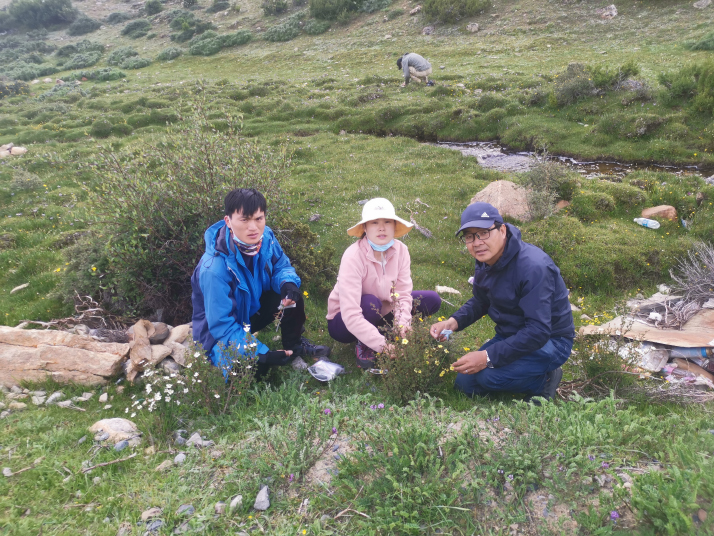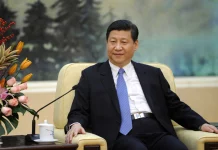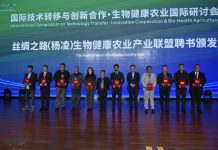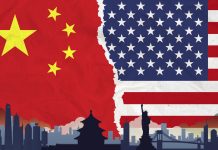This fertile and enigmatic land has long attracted curious explorers and researchers from home and abroad.
Among them is Laqiong, a botanist and professor of botany at the School of Ecology and Environment, Xizang University. With over 30 years of experience in ecological research, he has dedicated himself to preserving the diverse ecosystems of the Qinghai-Xizang Plateau.
Over the past decade, he and his team have traversed the plateau, covering nearly 600,000 km to fully survey the biological wealth of this remarkable land and collecting over 40 million plant seeds.
Rising to the challenge
“Each plant species requires 5,000 samples, while endangered species typically need 500. To preserve genetic diversity, these 5,000 seeds must be collected from multiple locations rather than a single site. Additionally, the distance between any two collection sites must be at least 50 km,” Laqiong told Beijing Review.
Working on a plateau exceeding 4,000 meters in altitude presents immense challenges and inherent risks. The footprints of Laqiong and his team can be found across the snow-capped mountains, river valleys, forests and barren sands of the plateau. “Just to collect seeds of the cudweed saw-wort (a plant that usually grows on mountain slopes and rocky screes at elevations between 2,700 and 5,700 meters—Ed.), we traveled across both the northern and southern slopes of Mount Qomolangma. Ultimately, we collected them on the northern slope at an altitude of over 6,000 meters, reaching the highest sampling point ever recorded by Chinese botanists,” he said.
The rugged and complex terrain is just one of the many challenges the team faces. The plateau’s climate is highly unpredictable—at elevations above 5,400 meters, temperatures can shift rapidly, resulting in the phenomenon of experiencing “all four seasons in a single day.” “One moment, the sun shines brightly; minutes later, it’s snowing, only for the skies to clear again soon after,” Laqiong recalled. On top of this, altitude sickness is a constant struggle. “Even for someone like me, born and raised in Xizang, it can be overwhelming. I often experience severe dizziness, especially when traveling
to the highest-altitude areas,” he added.
On the vast plateau, the team occasionally travels up to 800 km in a single day. They typically depart at 5 or 6 a.m. and arrive at their campsite around 9 or 10 p.m. After reaching their destination, they spend several hours sorting specimens. As a result, sleeping only two or three hours each night has become the norm for them during field surveys.
Noah’s Ark for seeds
According to Laqiong, Xizang’s ecological baseline and integrity are relatively well-preserved, yet the ecosystem remains fragile overall. Its structure and functions are quite simple, making it highly sensitive to global changes, with limited resistance to disturbances and a reduced capacity for natural recovery. Once damaged, it is difficult to restore the ecosystem naturally. Therefore, building an ecological barrier for the Qinghai-Xizang Plateau and improving its ecological resilience is a long-term and essential task.
Currently, both human activity and climate change have pushed many plateau plants to the brink of extinction. “We go to great lengths to collect these seeds so that if climate change one day threatens certain plateau species with extinction, future generations can use them to restore plant populations through artificial means—saving not only endangered species but, ultimately, humanity itself,” he
explained.
He further said, from a basic perspective, these plants have inherent medicinal value; from a broader viewpoint, the survival of a single plant species is crucial to maintaining the health of the entire ecosystem.
To date, they have extracted cancer-fighting compounds from one species of juniper they collected, which were certified by the American Pharmacists Association. They also discovered thale cress in the snow-covered region, providing valuable data for global botanical research. Additionally, they registered over 30,000 remaining specimens of Tibetan cypress, establishing a protective barrier for these rare trees.

Opening the treasure box
In 2019, Laqiong’s research team conducted the first whole-genome sequencing of Himalayan rock cress, a plant unique to the Qinghai-Xizang Plateau. This was the first such study conducted on wild plants from the region. In terms of the next phase, Laqiong stressed the conservation and utilization of the plateau’s original germplasm resources. Germplasm refers to a collection of genes for use in the improvement of plants. “These biological resources in Xizang must be not only well protected but also effectively explored and utilized,” he said.
Famous German medical skincare brand Eucerin once approached Xizang University to seek collaboration. They hypothesized that plants exposed to Xizang’s intense ultraviolet (UV) radiation likely contain potent UV-resistant compounds. Hoping to extract these active ingredients to inhibit melanin production in the skin, they proposed a joint research project. Laqiong readily agreed, believing that Xizang’s biological resources should be used to boost local livelihoods and benefit the community.
The university has also established multiple partnerships with enterprises in the biopharmaceutical sector, generating considerable social and economic benefits. It has also created a Tibetan medicinal resource bank and a high-altitude microbial resource bank, where researchers identify genes associated with properties such as radiation resistance, hypoxia tolerance, and cold and drought resistance. These discoveries not only enhance agricultural practices and livestock breeding but also offer insights into radiation protection for high-altitude residents and astronauts.
Laqiong has dedicated much effort to the Qinghai-Xizang Plateau germplasm resource bank. This initiative not only focuses on collecting genetic resources from plateau-specific plants, animals and microorganisms, but also involves the creation of a human genetic resource repository for the region. The goal is to provide strategic support for the conservation and study of the plateau’s local populations. This undertaking plays a crucial role in understanding the genetic traits of plateau populations, regulating their adaptation to low-oxygen environments and advancing research into the prevention of high-altitude maladies. –The Daily Mail-Beijing Review news exchange item






